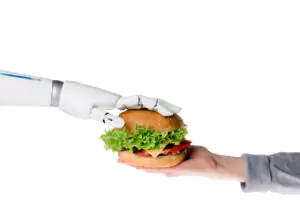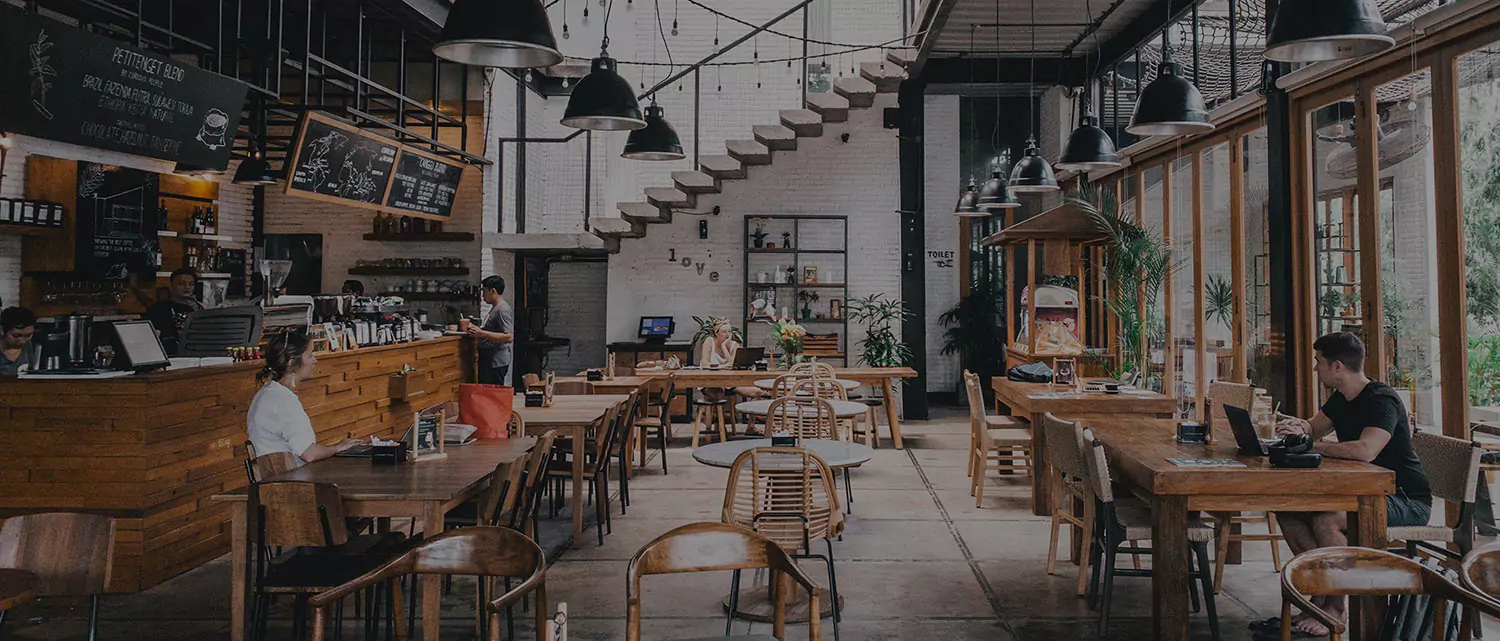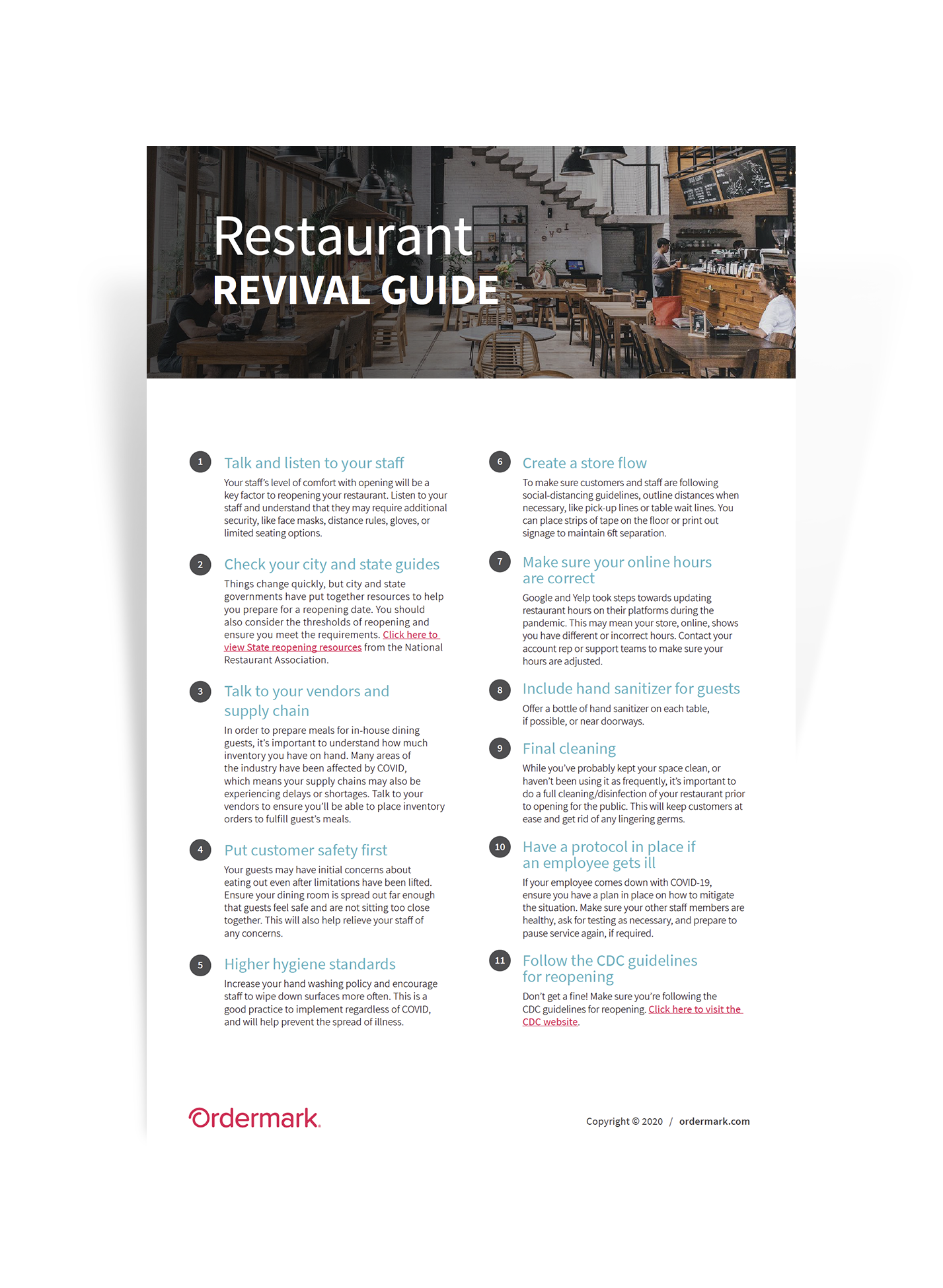As the restaurant industry emerges from the many challenges and uncertainties caused by the global pandemic, the changes made to stay in business have helped shape or accelerate five key trends in online food ordering and restaurant industry trends.
1. Restaurants Will Go Even More Digital
The pandemic prompted the revolution of digital and delivery. Restaurant leaders must prioritize planning for a digital menu with food quality and delivery taken into consideration.
The good news is that delivery has increased significantly. According to an article by Boston Consulting Group, “Delivery’s market share jumped from 7% in 2019 to about 20% in 2020. Across the industry, digital ordering now represents 28% of all orders compared with 10% before the pandemic, with most brands showing increases.”

Because of this, I believe virtual restaurant brands, like those we offer from Nextbite, will become even more important as they help restaurants increase sales and profit margins. A growing segment of the restaurant business, virtual restaurants use existing restaurant kitchens to whip up orders from a menu that is designed for off-premise customers.
Nextbite is here to partner with your restaurant to increase orders through virtual brands. Get in touch with us today.
2. More Variety To Meet Consumer Cravings For New Tastes
New ideas and trends travel faster around the globe now, and food is no exception. By adding virtual restaurant brands, a restaurant is able to quickly introduce new cuisines with a lower investment, and the restaurant’s partner handles menu development and marketing to drive demand.
3. Restaurant Layouts Will Shift To The New Era
As off-premise dining remains popular, restaurant owners must rethink how the physical layout of their restaurants will work best for their business, staff and customers. I predict that what used to be a 70/30 split, with more front-of-the-house dining space and a limited back-of-the-house kitchen area, will flip to 30/70, with more back-of-the-house space, by 2025. This flip will accommodate the changing restaurant business.
4. Restaurants Will Adopt New Approaches To Catering
The shift from in-office work to a hybrid home-office split, as well as lingering concerns regarding the pandemic, have caused companies to rethink how they want to use catering in the workplace. This has also prompted restaurants to get creative about how to build back a healthy catering business. Newer orders are more likely to be individually packaged — box lunches, for example, instead of large trays of shared food.
5. Delivery Robots Will Become More Mainstream
With delivery orders taking off, last-mile delivery is key, but it has been reliant on people. In order to meet the increased demand, we must retool for future growth, efficiency and cost-effectiveness. Driver staffing is stretched and the costs need to come down for consumers, so the opportunity is wide open for automation and technology to step in.

Some major cities are already testing or using robots for delivery, such as Los Angeles, Denver and Madison, Wisconsin. By the end of 2022, dozens of additional cities in the U.S. will likely see their first delivery robots. While already the norm in parts of Asia and India, I expect it to emerge first in bigger cities and college towns, then expand broadly.
While none of us will look back fondly on the pandemic, through perseverance, ingenuity and technology, this period helped us fast track into a new era for the restaurant industry. Now, as we near 2022, transformational opportunities are wide open for both restaurants and consumers. The table is set. Let’s work together.
This original article published to Forbes on November 10th, 2021.
1. Talk to your staff, listen to your staff
Your staff’s level of comfort with opening will be a key factor to reopening your restaurant. Listen to your staff and understand that they may require additional security, like face masks, distance rules, gloves, or limited seating options.
2. Check your city and state guides
Things change quickly, but city and state governments have put together resources to help you prepare for a reopening date. You should also consider the thresholds of reopening and ensure you meet the requirements. Click here to view State reopening resources from the National Restaurant Association.
3. Talk to your vendors and supply chain
In order to prepare meals for in-house dining guests, it’s important to understand how much inventory you have on hand. Many areas of the industry have been affected by COVID, which means your supply chains may also be experiencing delays or shortages. Talk to your vendors to ensure you’ll be able to place inventory orders to fulfill guest’s meals.
4. Put customer safety first
Your guests may have initial concerns about eating out even after limitations have been lifted. Ensure your dining room is spread out far enough that guests feel safe and are not sitting too close together. This will also help relieve your staff of any concerns.
5. Higher hygiene standards
Increase your hand washing policy and encourage staff to wipe down surfaces more often. This is a good practice to implement regardless of COVID and will help prevent the spread of illness.
Join thousands of your peers already getting our newsletter full of valuable insights.
6. Create a store flow
To make sure customers and staff are following social-distancing guidelines, outline distances when necessary, like pick-up lines or table wait lines. You can place strips of tape on the floor or print out signage to maintain a 6ft separation.
7. Make sure your online hours are correct
Google and Yelp took steps towards updating restaurant hours on their platforms during the pandemic. This may mean your store, online, shows you have different or incorrect hours. Contact your account rep or support teams to make sure your hours are adjusted.
8. Include hand sanitizer for guests
Offer a bottle of hand sanitizer on each table, if possible, or near doorways.
9. Final cleaning
While you’ve probably kept your space clean, or haven’t been using it as frequently, it’s important to do a full cleaning/disinfection of your restaurant prior to opening for the public. This will keep customers at ease and get rid of any lingering germs.
10. Have a protocol in place if an employee gets ill
If your employee comes down with COVID-19, ensure you have a plan in place on how to mitigate the situation. Make sure your other staff members are healthy, ask for testing as necessary, and prepare to pause service again, if required.
11. Follow the CDC guidelines for reopening
Don’t get a fine! Make sure you’re following the CDC guidelines for reopening. Click here to visit the CDC website.
Things to consider when reopening:
- Are you able to renegotiate your rent?
- Make sure you’re prepared to handle your online orders and your in-store orders with proper staffing and inventory
- Does your team need updated training?
- Engage with guests on social media! Let them know you’re open for in-house dining
- It might not be the best time to offer promotions, but consider a loyalty program to rebuild customer retention and engagement
- It may take some time to build back up to where you were. Keep positive, work hard, and know diners missed you just as much as you missed them!
For additional resources regarding your restaurant and COVID-19, visit Ordermark.com/COVID19



